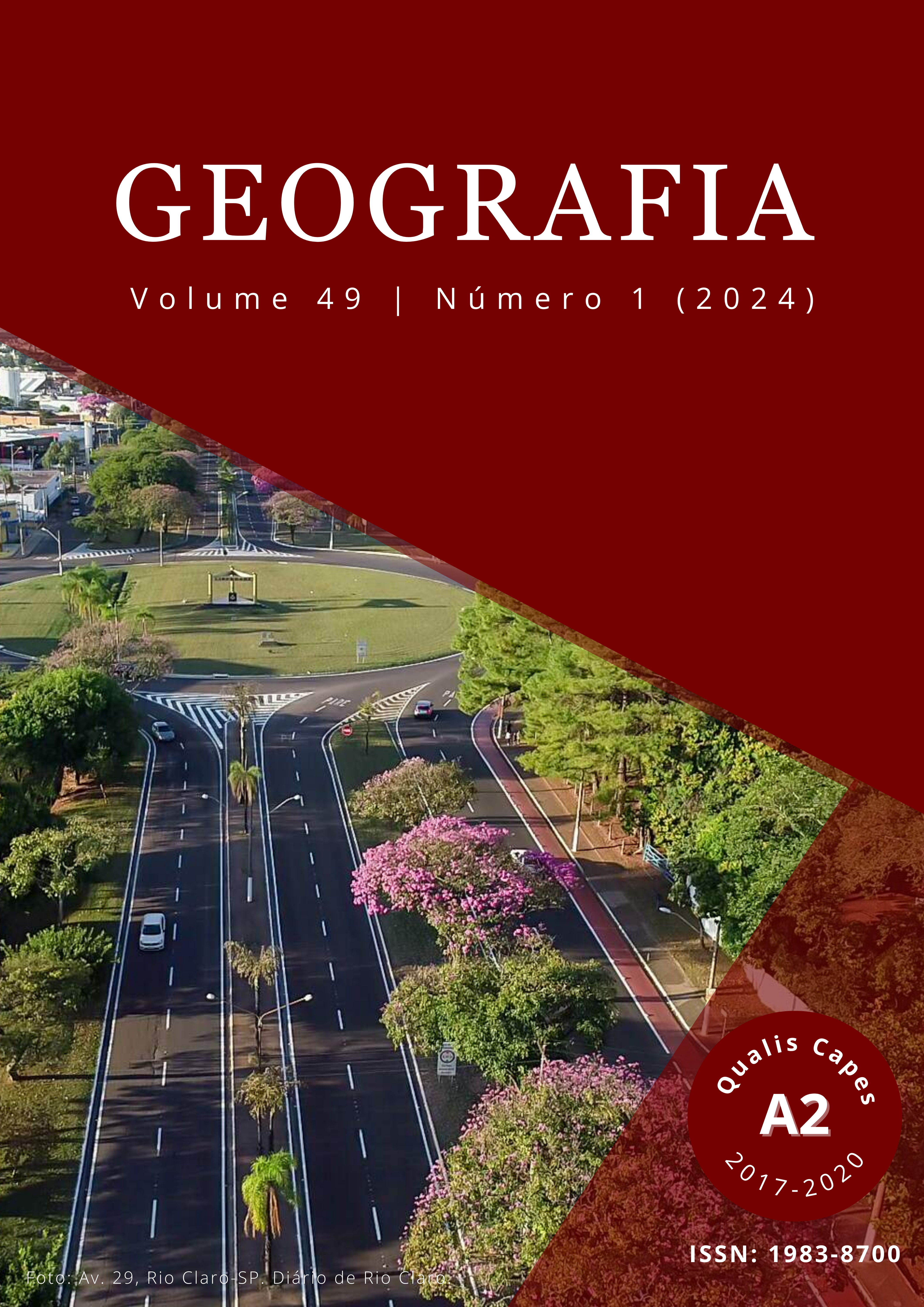Erosion and sediment deposition dynamics in a savanna riparian zone in the state of Goiás, Brazil
DOI:
https://doi.org/10.5016/geografia.v49i1.18435Abstract
Soil erosion generates negative ecosystem and economic effects and soil use and management practices for erosion prevention and control must consider local characteristics of soil, relief, vegetation and hydrology. This study aimed to elucidate the sediment deposition dynamics in a riparian zone resulting from the upslope erosion of a soybean cultivated Ferritic Ferralsol (Dystric, Clayic). The soil surface level was monitored by erosion pins and intensity and volume rainfall were measured by rain gauge during 17 months. Considering the balance between deposition and erosion, sediment deposition predominated (average 4.59 cm) despite the high spatio-temporal variability given by the average coefficient of variation of 113%. Despite the irregular distribution, a decreasing trend in sediment deposition from the edge to interior of the riparian forest and an increase in erosion inside the forest was observed, with an average soil loss of -4.40 and a maximum of -14.00 cm. The increase in the soil´s protective vegetation cover reduced the input of sediments at the edge and inside the riparian zone, by reducing the erosion of cultivated land on the upslope, especially importante during the rainy season in tropical regions.
Downloads
Published
Issue
Section
License
Copyright (c) 2024 GEOGRAFIA

This work is licensed under a Creative Commons Attribution 4.0 International License.
The authors maintain the copyright and grant GEOGRAFIA the right of first publication, with the articles simultaneously licensed under the Creative Commons BY 4.0 License, which allows sharing and adapting the articles for any purpose, as long as appropriate credits and provisions of image rights, privacy or moral rights. Other legal attributions can be accessed at: https://creativecommons.org/licenses/by/4.0/legalcode.en.
Geography, Rio Claro, SP, Brazil - eISSN 1983-8700 is licensed under the Creative Commons BY 4.0 License.





